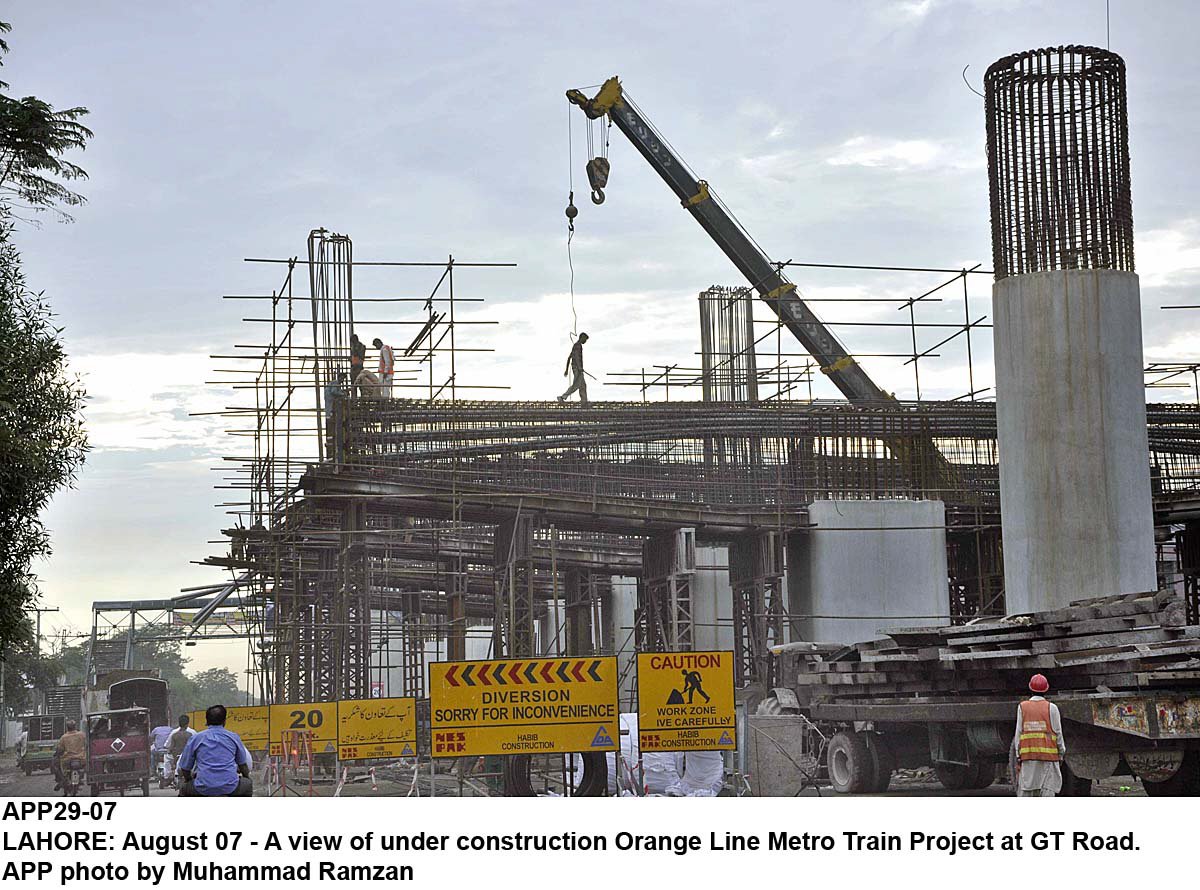
“People who do not preserve the past have no future,” Justice Azmat Saeed remarked.
If cleared, Orange Line may be delayed by a year
The five-judge bench of the apex court headed by Justice Ejaz Afzal Khan on Monday resumed the hearing of Punjab government and other appeals against the Lahore High Court verdict on the project.
Shahid Hamid, counsel for NESPAK, concluded his arguments on Monday. The counsel played a video before the bench wherein complete route that the train will take was highlighted.
He contended that heritage sites are completely preserved during construction. Punjab government is already under fire because of the project as international experts have also submitted contradictory environmental assessment reports on it.
The SC on October 14, appointed a commission comprising technical experts – Typsa-Asian Consulting Engineers and Prof Robin Coningham – for re-verifying the National Engineering Services Pakistan’s (Nespak) report, titled ‘Vibration Analysis of Viaduct Evaluation of Effects on Heritage Buildings’.
In the report, it was claimed that there was no threat to any of the five heritage buildings either during the construction of viaducts or during the operation of the electric train.
Public ownership of heritage sites advocated
However, the report compiled by Prof Coningham raised several objections over Nespak report, which had allowed the Punjab government to launch the project.
Prof Coningham observed that the train route contravened clause-22 of the Antiquities Act, which stated that no new construction could be undertaken within a distance of 200 feet of a protected immovable antiquity.
It said the train route also flouted clause-23 of the same act, which barred placing of neon signs or other advertisements, including signage and poles near the protected immovable antiquity.

1723278472-0/BeFunky-collage-(4)1723278472-0-165x106.webp)


1719564405-0/BeFunky-collage-(19)1719564405-0-165x106.webp)












COMMENTS
Comments are moderated and generally will be posted if they are on-topic and not abusive.
For more information, please see our Comments FAQ